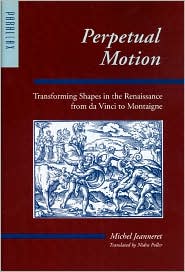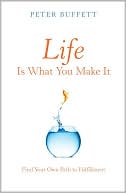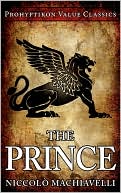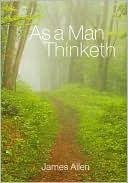Perpetual Motion: Transforming Shapes in the Renaissance from da Vinci to Montaigne
The popular conception of the Renaissance as a culture devoted to order and perfection does not account for an important characteristic of Renaissance art: many of the period's major works, including those by da Vinci, Erasmus, Michelangelo, Ronsard, and Montaigne, appeared as works-in-progress, always liable to changes and additions. In Perpetual Motion, Michel Jeanneret argues for a sixteenth century swept up in change and fascinated by genesis and metamorphosis.\ Jeanneret begins by...
Search in google:
First published in 1997 by Editions Macula, Poller's translation brings this intriguing volume to English readers. Jeanneret (French literature, U. of Geneva) focuses on the love of change and transformation, a topos he notes was prevalent during the Renaissance. The theme is considered through an analysis of the theories popular in natural philosophy, with attention to the 16th-century's understanding of the cosmos, geology, biology, and physics. In subsequent chapters, Jeanneret describes representations of humankind as a changeable, developing form and relates this sensibility to similar tendencies in the study and development of the French language and French and Italian literature. Annotation © Book News, Inc., Portland, OR Trevor Peach This superb study is immaculately presented . . . It is a source of endless pleasure to read, and one is constantly delighted by the insights it provides, and the new contexts in which often well-known material appears. —Modern Language Review
List of IllustrationsTranslator's NoteIntroduction11Universal Sway1Form and Force: Du Bartas112Natura naturans293Earth Changes: Leonardo da Vinci502Primeval Movement4Chaos815"Grotesques and Monstrosities"1043Culture and Its Flow6"We Are Never in Ourselves"1477The Hazards of Art: Le Roy1668Language Inflections1754Works in Progress9On Site19710Geneses2175Creative Reading11Reshuffling the Cards24112Works to Be Done257Notes279Bibliography299Index of Names311Subject Index317
\ Sixteenth Century JournalA brilliant exercise in cultural Geitsgeschichte by way of historically contextualized aesthetics.\ — François Rigolot\ \ \ \ \ \ Bibliotheque d'Humanism et Renaissance[ Perpetual Motion], by Michel Jeanneret, is brilliant and the translation by Nidra Pollet doesn't sound like a translation (a great compliment).\ — L. R. N. Ashley\ \ \ \ Modern Language NotesJeanneret's work offers both breadth of scope and depth of interpretation to scholars and students of the Renaissance who seek to understand the generating circumstances of humanist thought and of the art they created.\ — Deborah N. Losse\ \ \ \ \ \ Times Literary SupplementAn important book, not only because it has so much to say about significant topics such as creativity, the enhanced status of the artist/writer, the value of the unfinished and interpretation, but also because it offers a view of the Renaissance that coheres... It is refreshing to explore this complicated scene in the company of so informed a scholar, whose pen effortlessly follows the flux and mutations he perceives.\ — Margaret M. McGowan\ \ \ \ \ \ Modern Language ReviewThis superb study is immaculately presented... It is a source of endless pleasure to read, and one is constantly delighted by the insights it provides, and the new contexts in which often well-known material appears.\ — Trevor Peach\ \ \ \ \ \ Renaissance QuarterlyThere exists no finer or clearer overview of the creative drives of the Renaissance.\ — Tom Conley\ \ \ \ \ \ Sixteenth-Century JournalA brilliant exercise in cultural Geitsgeschichte by way of historically contextualized aesthetics.\ — François Rigolot\ \ \ \ \ \ Sixteenth Century Journal\ - Colin Dickson\ This ambitious, broadly integrative book argues persuasively for a late Renaissance whose art and literature were shaped by a widespread 'metamorphic sensibility'.\ \ \ \ \ \ Bibliotheque d'Humanism et Renaissance\ - L. R. N. Ashley\ [ Perpetual Motion], by Michel Jeanneret, is brilliant and the translation by Nidra Pollet doesn't sound like a translation (a great compliment).\ \ \ \ \ \ Modern Language Notes\ - Deborah N. Losse\ Jeanneret's work offers both breadth of scope and depth of interpretation to scholars and students of the Renaissance who seek to understand the generating circumstances of humanist thought and of the art they created.\ \ \ \ \ \ Sixteenth Century Journal\ - François Rigolot\ A brilliant exercise in cultural Geitsgeschichte by way of historically contextualized aesthetics.\ \ \ \ \ \ Times Literary Supplement\ - Margaret M. McGowan\ An important book, not only because it has so much to say about significant topics such as creativity, the enhanced status of the artist/writer, the value of the unfinished and interpretation, but also because it offers a view of the Renaissance that coheres... It is refreshing to explore this complicated scene in the company of so informed a scholar, whose pen effortlessly follows the flux and mutations he perceives.\ \ \ \ \ \ Modern Language Review\ - Trevor Peach\ This superb study is immaculately presented... It is a source of endless pleasure to read, and one is constantly delighted by the insights it provides, and the new contexts in which often well-known material appears.\ \ \ \ \ \ Renaissance Quarterly\ - Tom Conley\ There exists no finer or clearer overview of the creative drives of the Renaissance.\ \ \ \ \ \ Tom ConleyThere exists no finer or clearer overview of the creative drives of the Renaissance. —Renaissance Quarterly\ \ \ \ \ Deborah N. LosseJeanneret's work offers both breadth of scope and depth of interpretation to scholars and students of the Renaissance who seek to understand the generating circumstances of humanist thought and of the art they created.\ &3151;Modern Language Notes\ \ \ \ \ Margaret McGowanAn important book, not only because it has so much to say about significant topics such as creativity, the enhanced status of the artist/writer, the value of the unfinished and interpretation, but also because it offers a view of the Renaissance that coheres... It is refreshing to explore this complicated scene in the company of so informed a scholar, whose pen effortlessly follows the flux and mutations he perceives.\ —Times Literary Supplement\ \ \ \ \ Francois RigolotA brilliant exercise in cultural Geitsgeschichte by way of historically contextualized aesthetics. —Sixteenth Century Journal\ \ \ \ \ Tom ConleyThere exists no finer or clearer overview of the creative drives of the Renaissance.\ —Renaissance Quarterly\ \ \ \ \ Trevor PeachThis superb study is immaculately presented . . . It is a source of endless pleasure to read, and one is constantly delighted by the insights it provides, and the new contexts in which often well-known material appears. —Modern Language Review\ \ \ \ \ Margaret M. McGowanAn important book, not only because it has so much to say about significant topics such as creativity, the enhanced status of the artist/writer, the value of the unfinished and interpretation, but also because it offers a view of the Renaissance that coheres . . . It is refreshing to explore this complicated scene in the company of so informed a scholar, whose pen effortlessly follows the flux and mutations he perceives. —Times Literary Supplement\ \ \ \ \ Deborah N. LosseJeanneret's work offers both breadth of scope and depth of interpretation to scholars and students of the Renaissance who seek to understand the generating circumstances of humanist thought and of the art they created. —Modern Language Notes\ \








